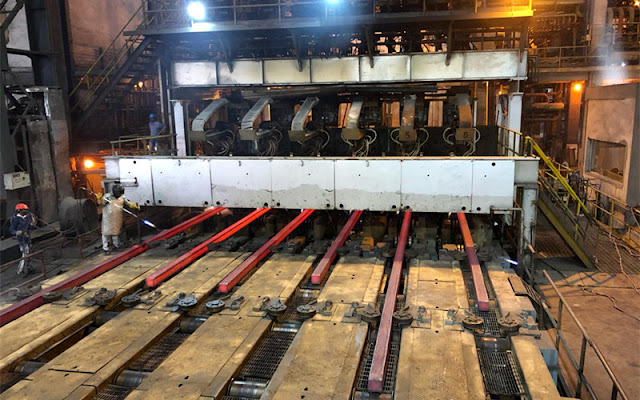The Roller grinder is a special grinder developed on the basis of the cylindrical grinder. According to the weight of the roller, it can be divided into two categories:
1. Movable workpiece bed. It is mainly used for roller grinder with the roller weight ≤ 6 tons.
2. Move the wheel frame. It is mainly used for roll grinder with a weight of more than 6 tons. Regardless of the type of roll grinder, their structure is roughly the same. It mainly consists of the following parts: bed, bedside table, tailstock, bracket, grinding wheel rack, convex (concave) forming mechanism, electrical control equipment, coolant supply and filtering equipment. The main components of the roll grinder are briefly described below.
1. Roll grinder bed. This is the basis of ensuring grinding accuracy.
(1). the main machine of the workpiece mobile grinder is used to support the fixation of roll, tailstock, bracket and headstock, as well as the guiding function of mobile worktable. The auxiliary bed is used to support the wheel frame, and the longitudinal direction of the wheel frame is fixed.
(2). The main bed of the mobile grinder with the grinding wheel frame is used to support the grinding wheel frame, and the longitudinal direction of the grinding wheel frame moves back and forth on the grinding wheel frame. His machining accuracy and installation accuracy are very high. The auxiliary bed is used to support the fixation of the roller, tailstock, bracket and headframe. The bed is made of cast iron. In order to keep the high precision of the bed, aging treatment and scraping treatment were carried out after machining. The whole bed is placed on the correct angle which is fixed on the cement foundation. Most of the bed rails are in the form of V-P rails (except hydrostatic rails), which have high guiding accuracy and good rigidity. Bed movement is divided into hydraulic cylinder type (short stroke), gear carrier type, and roller screw type.
2. The headstock is used to drive the rolls, most of which use the multi-stage belt drive to ensure stable driving. A special starting motor is also installed on the heavy roller mill. For small roller mills, there are also gearing with reduction mechanisms, such as turbines or gears. The headstock is driven by the electric motor and can be adjusted steplessly. In order to ensure the smooth rotation of the roll, a floating driving device is set on the dial, and the pressure on the two dial must be evenly applied during the rotation.
3. Tailstock. The function of the tailstock is to position the roll axially during grinding to avoid the mill roll moving axially during grinding. Most tailstock consists of upper and lower parts. The lateral direction can be slightly adjusted from the upper part so that the two shafts of the main axle box are parallel to the main axis. Usually, the diamond finishing pen is mounted on the tailstock to finish the grinding wheel. The tailstock of CNC grinding machine is also equipped with a reference plate, which is used to correct the diameter measured by CNC.
4. Bracket. The carriage is used to support the roll during grinding. It is usually supported on the neck of the roller. It is divided into left and right brackets. The position of the left and right supports and the upper and lower support shoes of each support cannot be reversed. Each support shoe also has a different support diameter to choose from. When adjusting the support seat each time, the upper shoe and lower shoe should be adjusted after the reel is positioned together with the headstock and tailstock by means of lifting equipment.
5. Grinding wheel rack. It is the core of the roll grinder. The formation mechanism of roll shape and spindle which affect grinding accuracy is concentrated on the grinding wheel frame. The grinding wheel rack usually consists of the following parts: the main body of the rack, the spindle, the dynamic balance device of the grinding wheel, the horizontal feed mechanism, the convex (concave) forming mechanism, the power-off protection mechanism, etc.
If you are looking for rolls of rolling mills, please contact me.
Email: marketing2@hanrm.com.









